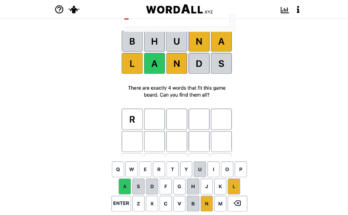
I run most mornings, usually making the same boring loop of the neighborhood each time. But today, I found myself at a nearby park, scrutinizing a map, strategizing the best way to capture the most tiles for my team. I was playing a game called Stride, and I could see it becoming addictive.
The app is free (for basic features) on iOS and Android, and the mechanics of the game go like this: The world is divided into hexagonal tiles, and wherever you run (or walk, or travel in your wheelchair), you can claim a tile. If your route takes you in a closed loop, you also get the tiles in the center of that loop. Each tile is ‘owned’ by whoever has visited it the most times.
If you like jockeying for KOM (king of the mountain) bragging rights on Strava, you might appreciate Stride for its different flavor of competition. The difference is that Stride tiles are won by number of visits, not speed—you can be the slowest runner out there, but if you hit the same park trail every day, it can be yours.
What it’s like to play Stride
The game is new, at least to my area. On opening the map, I can see that most of the hexagonal tiles are unclaimed, save for clusters here and there: the county park, a few random neighborhoods. Everyone is on the Red team, same as me (you can change teams any time you like, but the app said the Red team needed members, so here I am.)
G/O Media may get a commission
My first thought was to take the app on my usual morning run, but that starts and ends at my house. Unlike Strava, which allows you to log public or private activities, Stride is all about the public map. So I went to the park instead.
One of my favorite running spots at the park was unclaimed, so I headed there. You see the tiles you’re claiming as you run, so instead of just going on autopilot and cruising around the usual loop, I paid attention to when I was at the edge of a tile. Sometimes I could claim an extra hex by heading down a side road or choosing a longer trail instead of a shortcut. After a two-mile jaunt, I was the proud owner of 10 previously-unclaimed tiles.
Not satisfied, I got back in my car and set my sights on a large chunk of tiles owned by a teammate named Mangler. I parked in unclaimed territory and jogged toward the tiles he owned. I picked up a few of them, then stood at the side of the road and ended my run so I could see the results. I had snagged five of Mangler’s tiles, and also captured five new ones of my own. The stolen tiles now each had a two-person leaderboard: Mangler and I had visited them each once, but I was the winner since I had done so more recently. (Mangler probably got a notification about this, so we’ll see if they head out soon to take them back.)
Determined to protect my new territory, I restarted the app. I had previously noticed that on an out-and-back path, I only got credit for one visit per tile, even if I had crossed it twice. So I started a new run before I headed back to my car, and as a result, logged two visits to some of the tiles. The more visits, the more secure my ranking.
And in the end, even if Mangler takes their territory back, at least I know I helped my team by capturing extra tiles for us.
Technical aspects of playing Stride
If you have a Garmin device, you’re in luck: the Stride app can import runs you track with the Garmin. It doesn’t sync with any other apps or devices (like the Apple Watch) as far as I can tell, so when I went out for my runs, I had to turn on the Stride app and let it track me.
The map was hard to figure out at first—I am on the red team, but all the colored tiles were blue or green. It turns out there’s a map view for teams (in which red team territory is red) and another for individuals (in which my tiles are green and everybody else’s are blue).
You can play the game without buying a subscription, but detailed leaderboards and team stats are only available to members (becoming one will run you $8.99/month or $44.99/year). If the game becomes popular in your area, coordinating with teammates to capture territory could be a fun way to plan your runs and keep in touch with other runners.



